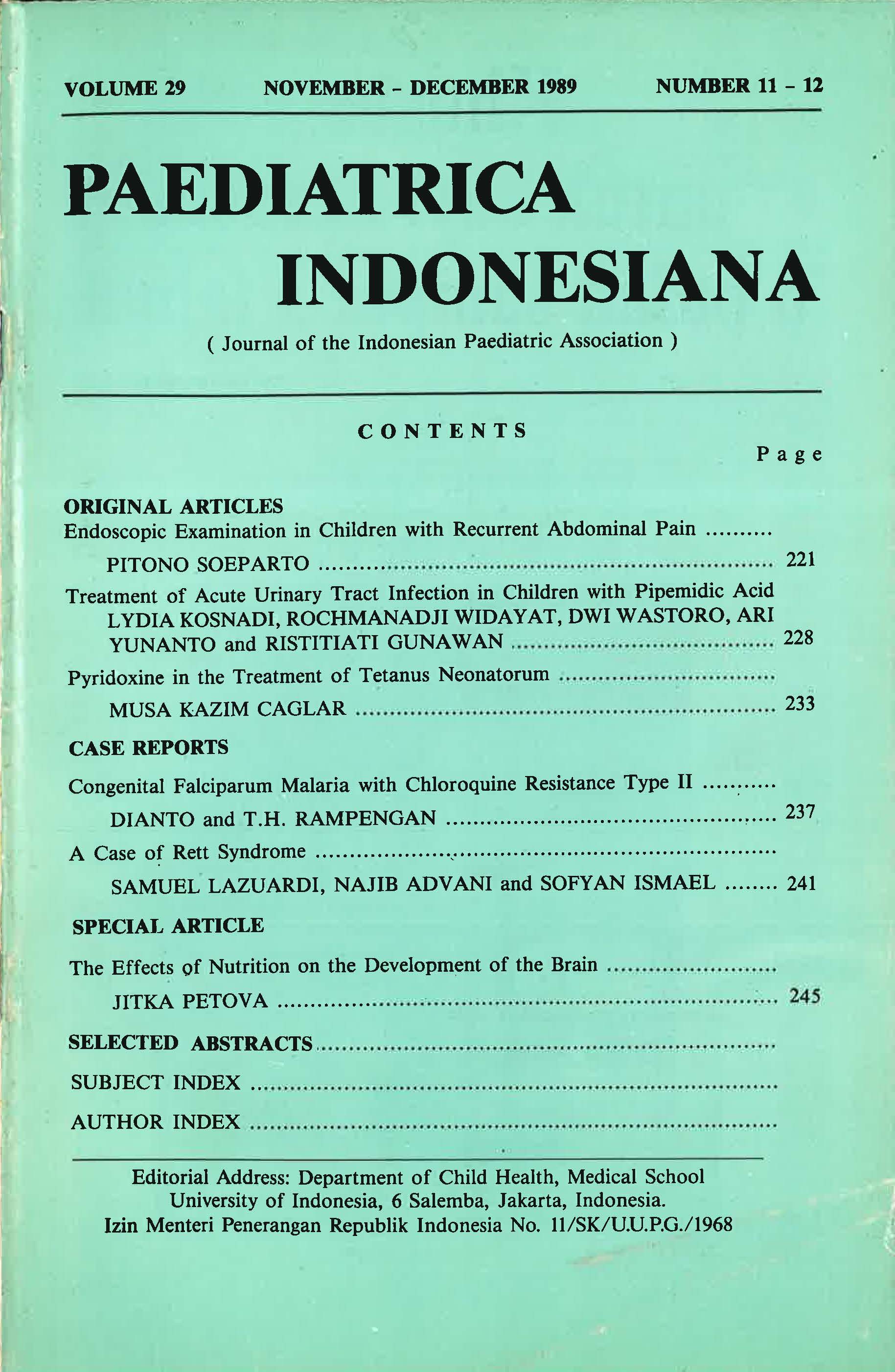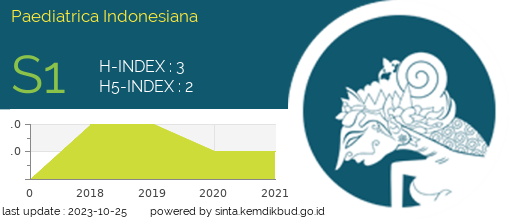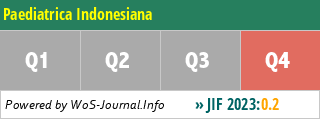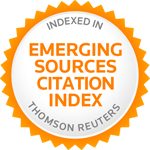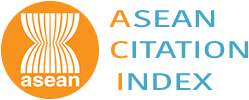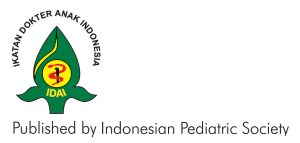Treatment of Acute Urinary Tract Infection in Children with Pipemidic Acid
Abstract
Urinary tract infection in children is still an important problem in uronephrology. The disease.tends to develop recurrently and results in chronic progressive renal disease in the future.
Pipemidic acid is a bactericidal quinolone derivate, with a wide spectrum against gram positive and negative bacteria. Compared with nalidixic acid, pipemidic acid proves to be more effective against Pseudomonas, E. coli, Alkali genes and Salmonella.
Thirty one cases with acute urinary tract infection had been studied descriptively. The etiology revealed as follows: E. coli (45.2%), Alkaligenes (16.2%), Enterobacter (9.6%), Staphylococcus (9.6%), Pseudomonas (9.6%), Paracolon (6,5%), and Proteus (3.3%).
Pipemidic acid was administered orally to these patients, 15-20 mg/kg/day divided in 2 equal doses for 10 days. Bacteriological examinations was repeated on the 6th day and 11th day treatment. The result revealed that on the 6th day of treatment, in 27 patients (87, 09%) there was no bacteriuria while on the 11th day the urine of 29 patients (93.54%) were sterile.
In conclusion, a 5 day treatment of acute urinary tract infection in children with pipemidic acid is quite effective.
References
2. CHANTLER, C.: Urinary tract infection in children. Hongk. J. Pediat. 2: 235- 244 (1985).
3. ClCMANEC, J.F; EVANS, A.T.: Classification of urinary tract infections by biotype identification of the pathogens. J . Urology, 124: 68-69 (1980).
4. FAIELEY, K.F.; WHIWORT, A.Y.: Problems in treatment of urinary tract infection. Med. Prog. 7: 39 (1980).
5. GAN, S.; SUHARTO, B.; SYAMSUDIN, U.; SETIABUDY, R.; SETIAWATI, A.; GAN, V.H.: Farmakologi dan Terapi ed. 2 hal. 469-473. (Bagian Farmakologi FK UI, Jakarta, 1980).
6. GAUTHIER, B.; EDELMAN, C.M.; BARNETT, H.L.: Nephrology and Urology for the Pediatrician 1st ed. pp. 73- 85. (Little Brown, Boston, 1982).
7. HORI, M.; KOHNO, S.; JOH. K.: OKAMOTO, K.; TOTANI, M.: Clinical experience with pipemidic acid in bacterial infections of children. Chemother. 23: 2880 - 2888 (1975).
8. KEMPE, C.H.; SILVER, H.K.; O'BRIEN, D.: Current Pediatric Diagnosis & Treatment 7th ed. pp. 497 - 526 (Lange Med. Publ. Los Altos, 1982).
9. MOFFET, H.L.: Pediatrc Infectious Diseases 2nd ed. pp. 347- 354 (William Morrow, New York, 1981).
10. ONGKIE, A.S.: Penatalaksanaan infeksi saluran kencing pada anak. Simposium Nasional Nefrologi Anak II. Kumpulan Naskah hal. 111-124 (lkatan Dokter Anak Indonesia Jawa Timur, Surabaya, 1983).
11. PETER, G.; GIEBINK, G.S.; HALL, C.B.; PLOTKIN, S.A.: Report of the committee on infectious diseases 20th ed. pp. 485 . (American Academy of Pediatrics, lllionois, 1986).
12. SENDA, H.; FUJIMOTO, G.S.; HALL, C. B.; TATSUMI, H.: Toxicological studies of pipedimic acid. Chemother 23: 2739- 2764 (1975).
13 . SHIMIZU, M.; NAKAMURA, S.; TAKASE, Y.; KUROBE, N.: Pipemidic acid; absorption, distribution and excretion. Antimicrob. Agents Chemother. 7: 441 - 446 (1975).
14. SIDOR, T.A.; RESNICK, M.l.: Urinary tract infection in children. Pediat. Clins N. Am. 30: 323 - 332 (1983).
15. TUNE, RM.; MENDOZA; BRENNER, B.M.; STEINB, J.H.: Pediatric Nephrology 1st ed. pp. 155-181 (Churchill Livingstone New York, 1984).
16. UEDA, Y.; MATSUMOTO, F.; SAITO, A.; OHKOSHI, M.; KAWAMURA, N.; NISHIURA, T.; KAWADA, Y.; BAN, Y.: Clinical studies on pipemidic acid. Jap. J. Antibiot. 31: 528 - 535 (1978).
17 . CLINICAL, V.C.; MACKAY, R.J.; BEHRMAN, R.E.: Textbook of Pediatrics 11th ed. pp. 1543 - 1548. (Saunders, New York, 1981).
Copyright (c) 2018 Lydia Kosnadi, Rochmanadji Widayat, Dwi Wastoro, Ari Yunanto, Ristitiati Gunawan

This work is licensed under a Creative Commons Attribution-NonCommercial-ShareAlike 4.0 International License.
Authors who publish with this journal agree to the following terms:
Authors retain copyright and grant the journal right of first publication with the work simultaneously licensed under a Creative Commons Attribution License that allows others to share the work with an acknowledgement of the work's authorship and initial publication in this journal.
Authors are able to enter into separate, additional contractual arrangements for the non-exclusive distribution of the journal's published version of the work (e.g., post it to an institutional repository or publish it in a book), with an acknowledgement of its initial publication in this journal.
Published 2018-08-16

